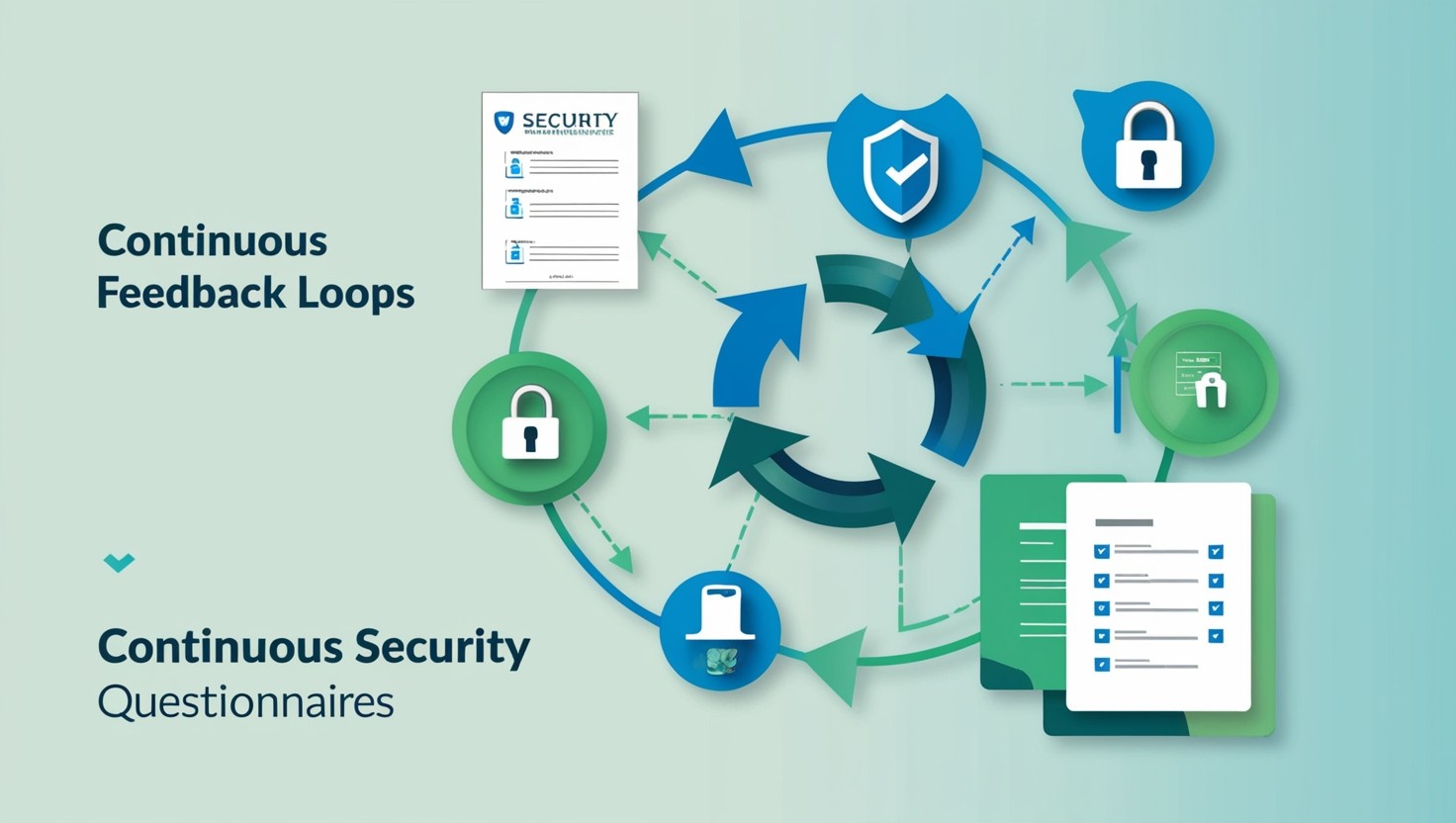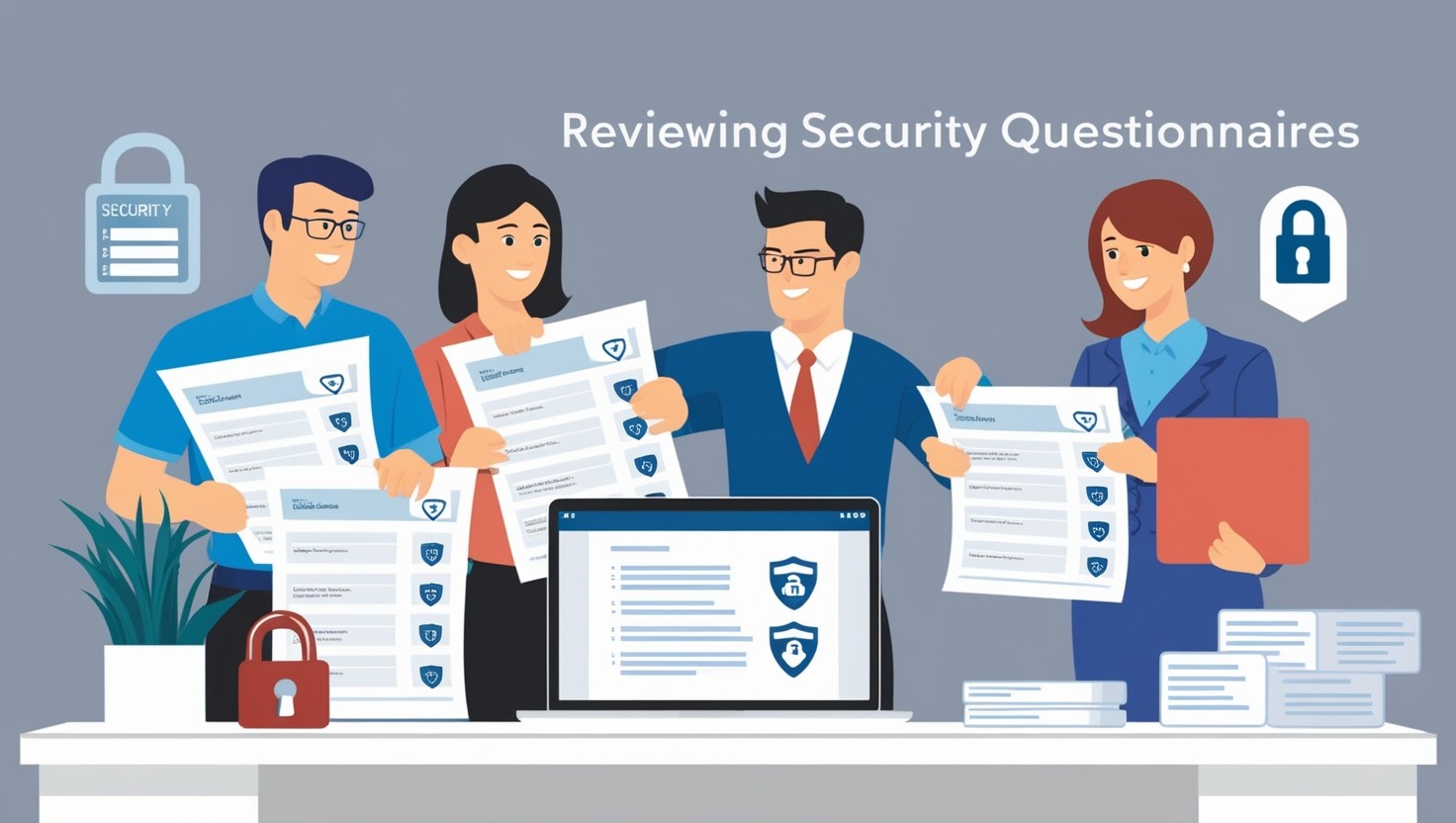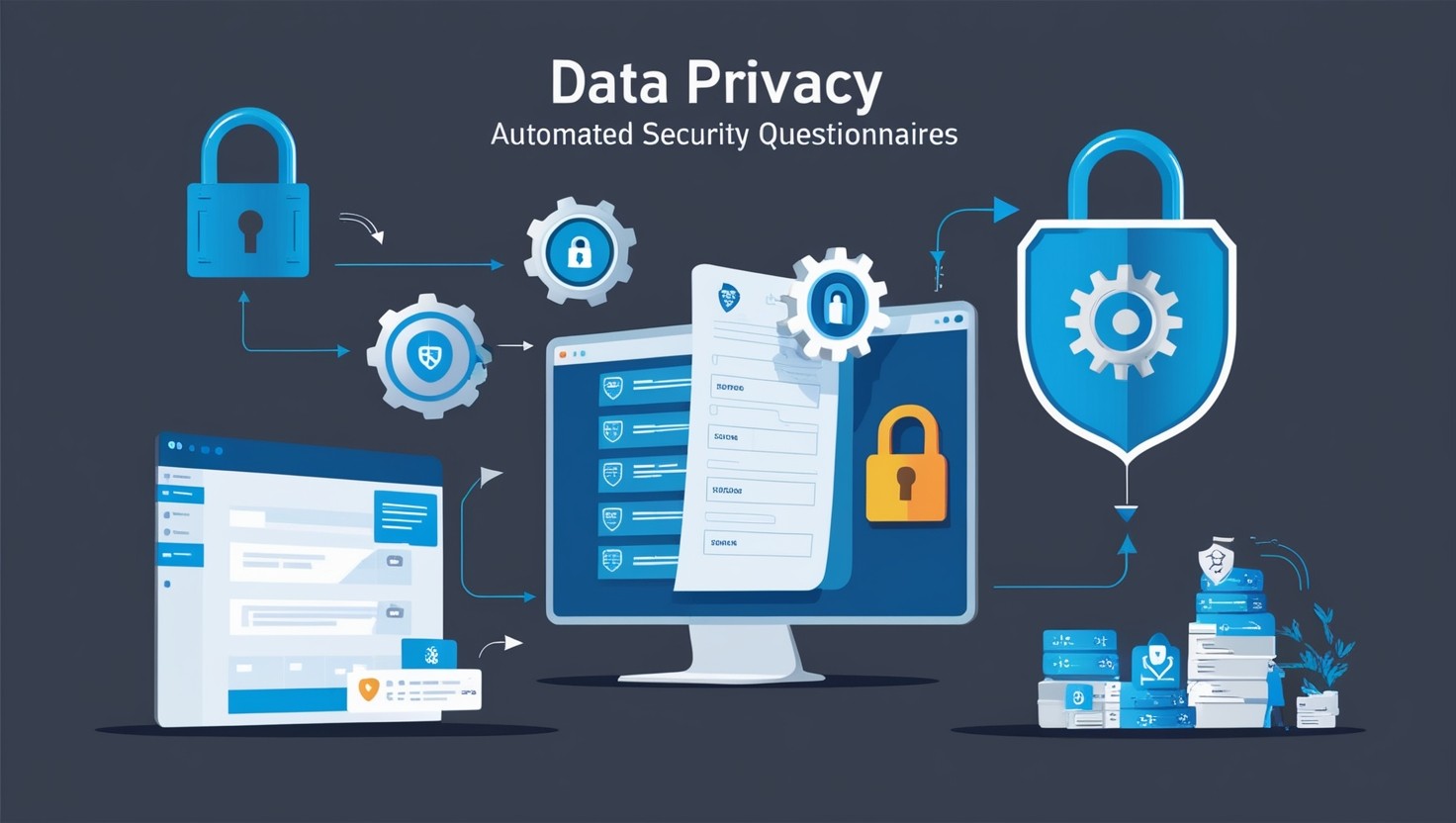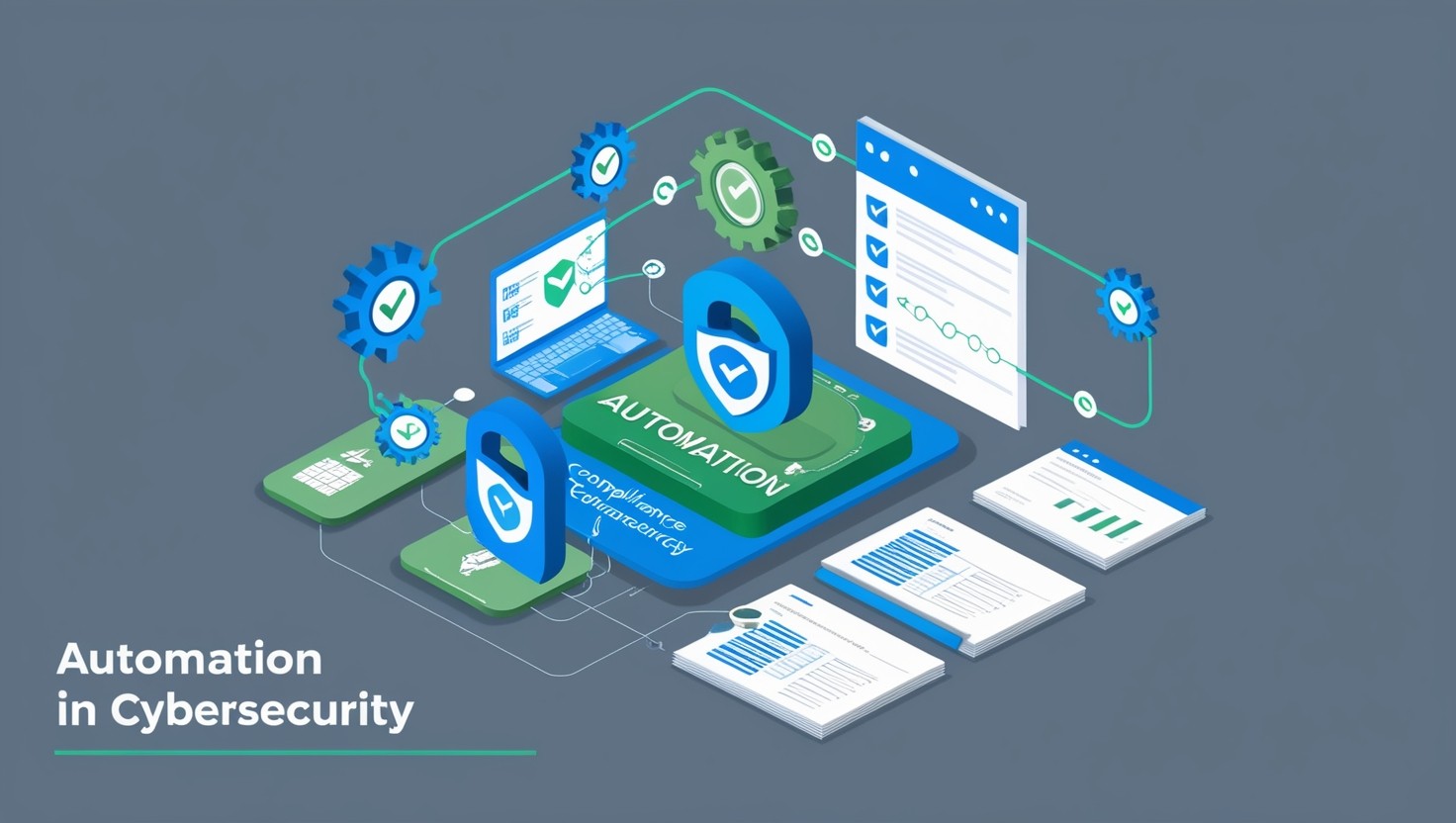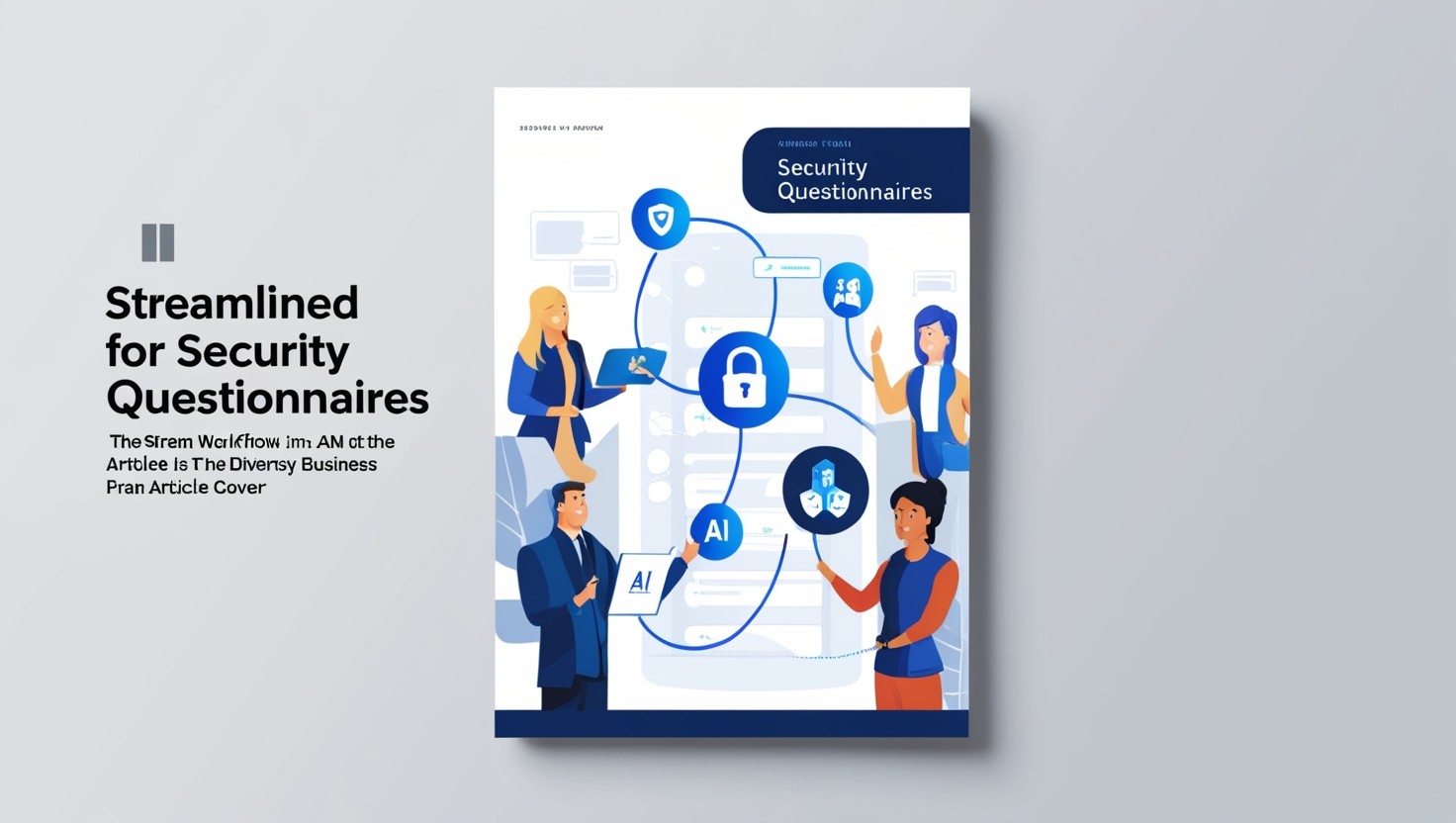How AI can make security questionnaires less painful
Share This Article
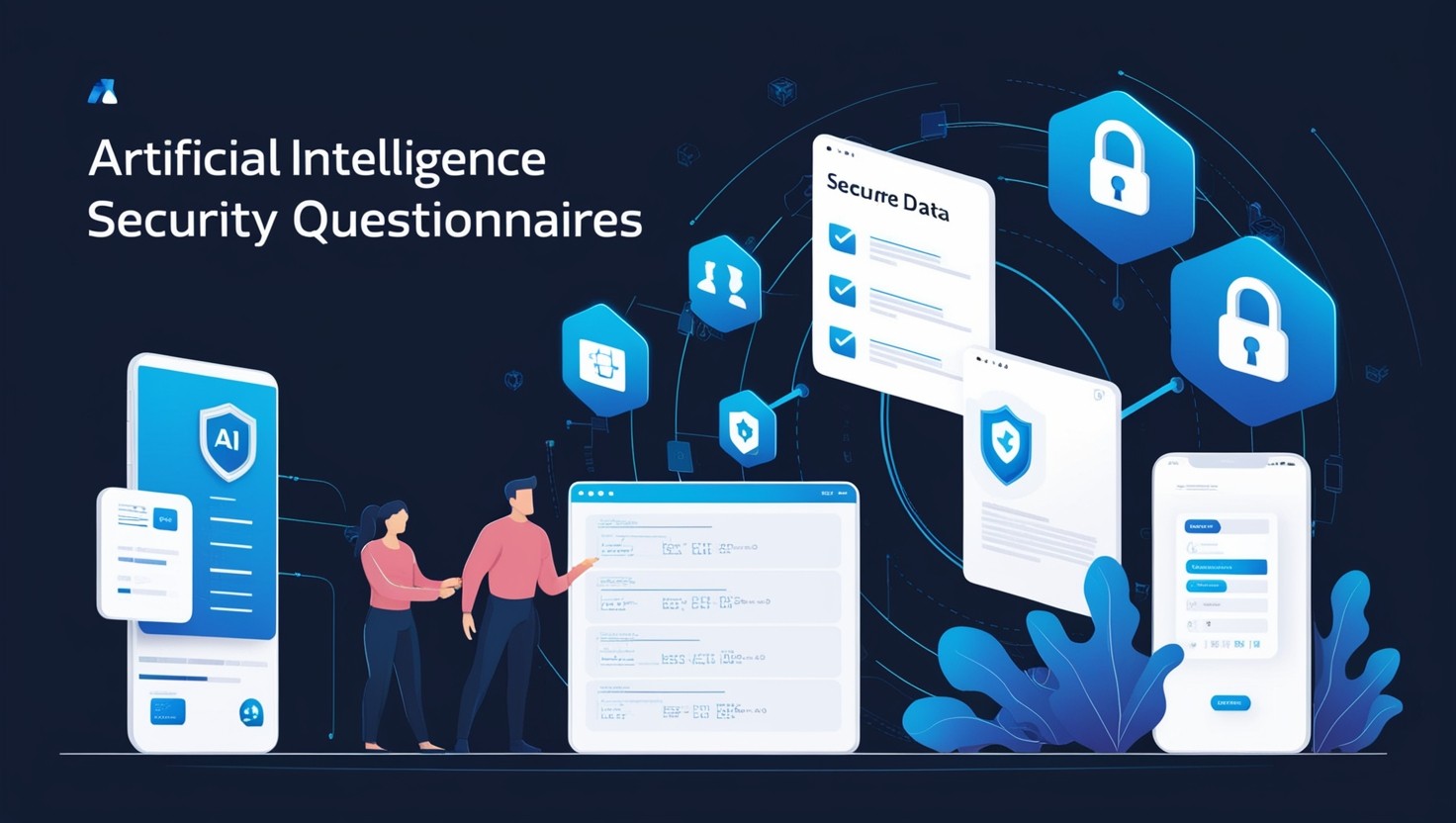
Automation in Security Questionnaires
Automating security questionnaires has transformed a traditionally tedious and time-consuming task into a streamlined and efficient process. This section explores how AI enhances responses and streamlines questionnaire processes, making the pain of manual responses a thing of the past.
Enhancing Responses with AI
Enhancing responses with AI technology significantly reduces the manual effort involved in completing security questionnaires. Tools like UpGuard's AI Enhance feature can fix typos, correct grammatical errors, and refine rough draft responses, enabling users to provide polished, response-ready sentences quickly and easily (Upguard).
Secureframe has also introduced enhancements to Questionnaire Automation with Trust AI. Trust AI includes AI-powered answer rephrasing and updates to the AI answer verification process, which reduces human error and saves valuable time for customers. This automation ensures consistent, accurate, and tailored responses, saving organizations hundreds of hours in answering tedious security questionnaires.
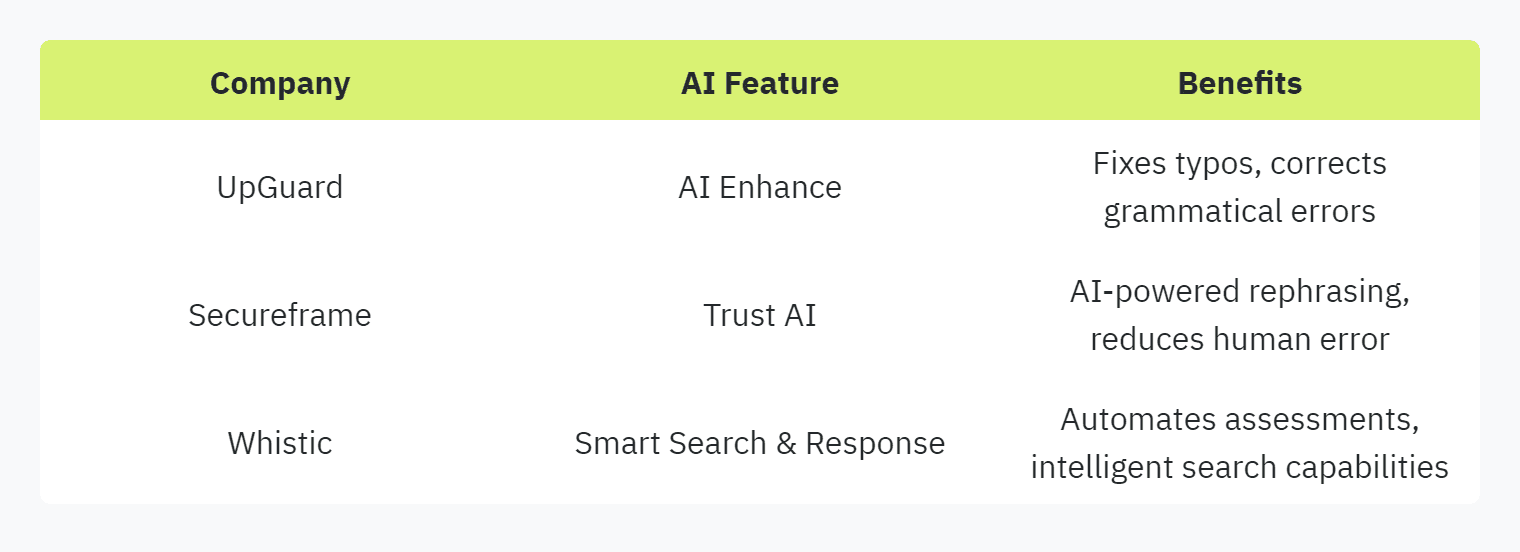
For more insights on the impact of AI on security questionnaires, check out our articles on automating security questionnaires and ai and automation in security questionnaires.
Streamlining Questionnaire Processes
AI plays a pivotal role in streamlining the questionnaire processes, making it faster and more efficient. Trust AI by Secureframe leverages AI to automate the collection and parsing of security questionnaire answers. This ensures that responses are consistent, accurate, and tailored to specific queries, which saves organizations significant time (Secureframe Blog).
Whistic's AI-powered features such as Smart Search, Smart Response, and SOC 2 Summarization automate security assessments, provide intelligent search capabilities, source answers to questionnaires, and summarize audit details in SOC 2 reports (Whistic). These tools optimize the third-party risk management process.
Security teams can implement automation to achieve both speed and accuracy in their processes. However, it's also essential to supplement automation with human oversight for optimal results (Security Pal HQ).

Accelerate your understanding of AI in streamlining security questionnaires by exploring our guides on streamlining security questionnaires and reducing time to complete security questionnaires.
AI Solutions for Questionnaire Automation
Trust AI by Secureframe
Secureframe's Trust AI automates the process of filling out security questionnaires and RFPs, facilitating organizations to focus on their main business activities. Launched in 2022, this tool leverages comprehensive information from multiple sources within Secureframe Comply to help customers save valuable time by reducing manual work in finding and verifying answers to security questions (Secureframe Blog).
Key features of Trust AI include:
Generative AI Rephrasing: During the verification process, Trust AI can rephrase answers using generative AI, maintaining consistency across various questionnaires by adapting answers based on the context.
Multiple Source Integration: The tool pulls relevant information from appropriate sources, ensuring consistent, accurate, and tailored responses to security questions.
The benefits of using Trust AI are evident in the significant reduction of time spent completing tedious security questionnaires, saving organizations hundreds of hours.
Whistic's AI Integration
Whistic offers AI-powered features to automate security assessments and optimize third-party risk management processes. The key components of Whistic’s AI integration are Smart Search, Smart Response, and SOC 2 Summarization.
Smart Search: Provides intelligent search capabilities within security questionnaires, allowing users to quickly locate relevant information.
Smart Response: Automates sourcing answers to security questions by pulling from previous responses, resulting in time-efficient completion of questionnaires.
SOC 2 Summarization: Summarizes audit details in SOC 2 reports, offering a concise overview of compliance status.
These AI-driven tools simplify the process of automating vendor security assessments, ensuring accurate and efficient handling of security questionnaires.
By comparing the functionalities of Trust AI and Whistic’s AI integration, organizations can select the tool that best fits their needs for automating security questionnaires while ensuring compliance and reducing the manual workload for security and compliance officers.

For further insights on AI's role in security questionnaires, refer to our articles on why security questionnaires are a nightmare and automating security questionnaire responses.
Implementing AI in Security Questionnaires
Benefits of AI Integration
Integrating AI in security questionnaires offers several benefits, particularly for security and compliance officers, IT managers, and SaaS startups. AI technology addresses the challenges associated with manual completion and streamlines the entire process.
Efficiency and Speed: AI-powered systems significantly reduce the time required to complete security questionnaires. By automating the data collection and response generation, organizations can quickly address detailed security queries, thus reducing time to complete security questionnaires.
Accuracy and Consistency: Utilizing machine learning models ensures that responses are consistent and accurate. AI eliminates the risk of human error, which is crucial for maintaining compliance.
Proactive Monitoring: AI systems can continuously scan for emerging threats, enabling organizations to prepare for potential vulnerabilities before they are exploited. This proactive approach is essential for maintaining high security standards.
Real-time Updates: AI can provide real-time monitoring and rapid response, ensuring that security measures are up-to-date with the latest threats (Secureframe).

For more information on how AI contributes to automating security questionnaires, refer to our guide to automating security questionnaires.
Overcoming Challenges
While the advantages of AI in security questionnaires are clear, there are challenges that need to be addressed to maximize its potential:
Lack of Trust and Adoption: Stakeholders may be hesitant to adopt AI due to a lack of awareness, understanding, or confidence in AI capabilities. It's crucial to communicate the value of AI clearly and involve users in the implementation process to build confidence.
Data Privacy and Security: Ensuring that the AI systems themselves are secure and that they adhere to strict data privacy regulations is paramount. Continuous monitoring and updating of the AI systems are essential for maintaining high data privacy standards.
Technical Challenges: Implementing AI solutions requires sophisticated infrastructure and technical expertise. Organizations may need to invest in training and development to effectively integrate AI into their current systems.

For further insights into automation in security questionnaires, visit our section on automating security questionnaires.
To effectively integrate AI into security questionnaires, organizations must navigate these challenges while leveraging the advantages AI offers. For tips and best practices, refer to our article on best practices for security questionnaires.
Future of AI in Security Questionnaires
Enhancing Data Privacy
AI's role in security questionnaires extends beyond automation and efficiency; it's pivotal in enhancing data privacy. By reducing the likelihood of human error through automation, AI ensures that sensitive information remains secure. AI equips cybersecurity teams with robust tools and insights that improve their efficiency and effectiveness.
One of the ways AI enhances data privacy is by automating routine tasks that are prone to error when performed manually. This not only increases accuracy but also fortifies the protection of sensitive information. AI systems help in the consistent application of data privacy policies and streamline the monitoring and management of data privacy compliance.
To further bolster data privacy, organizations can implement tailored AI security controls assessments for third parties. Questions focusing on data privacy policies, the secure storage of data, data integrity maintenance, and secure data processing pipelines all contribute to a comprehensive evaluation (Prevalent). For more insights into data privacy in security questionnaires, check out our article on data privacy in security questionnaires.
Advancing AI Security Policies
Advancing AI security policies involves rigorous evaluation of vendor security controls, data protection mechanisms, and access protocols. These measures are aligned with the organization's AI security standards to protect sensitive data and ensure content accuracy. AI security policies should be standardized and applied consistently to both internal processes and third-party vendors.
Organizations can employ a 16-question survey tailored to assess AI security controls in third-party vendors (Prevalent). This comprehensive assessment reveals and mitigates hidden AI threats, such as security vulnerabilities, data breaches, malicious code, and biases in algorithms. Below are key areas to explore in an AI security policy assessment:
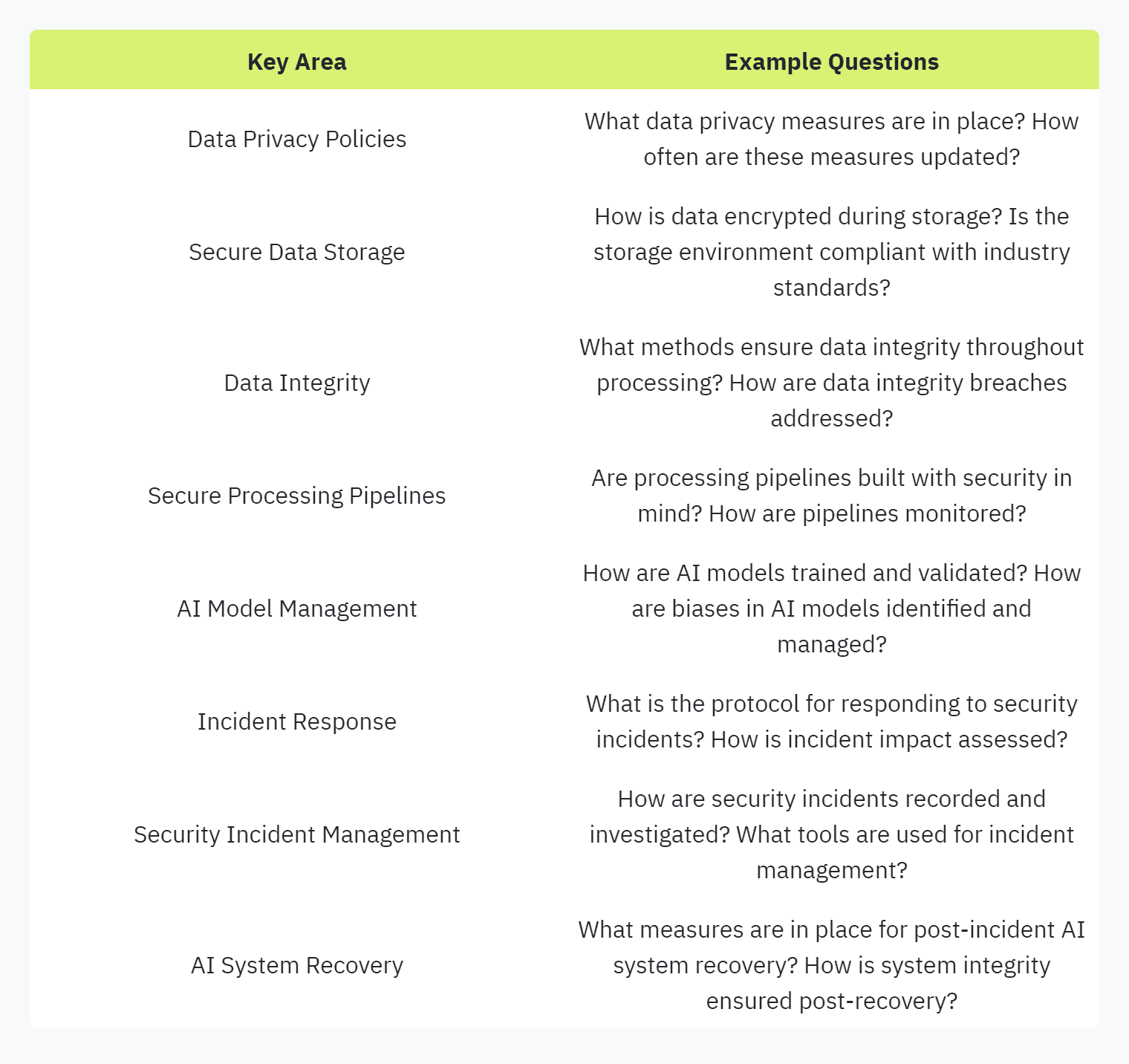
By focusing on these areas, organizations can advance their AI security policies and ensure their AI applications and third-party integrations are secure and reliable. For strategies on implementing these policies, refer to our guide on automating security questionnaires.
Embracing AI in security questionnaires not only streamlines processes and enhances efficiency but also ensures robust data privacy and security measures are in place, safeguarding sensitive information and fostering a secure environment for digital interactions.
Enter your email to start accelerating your sales today.


